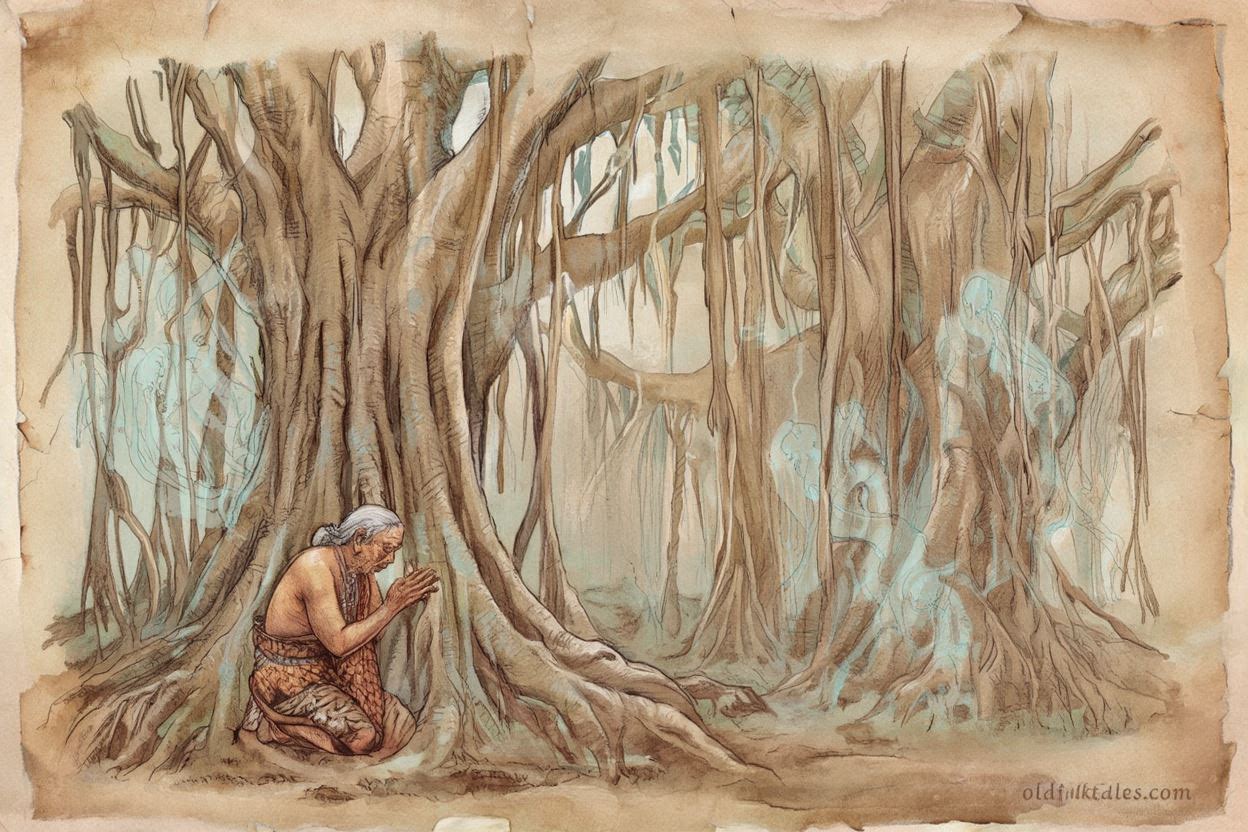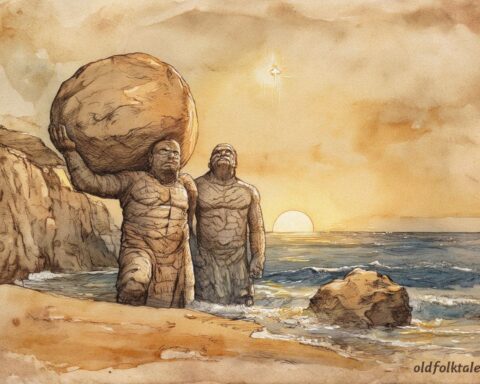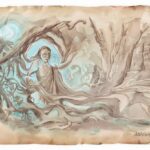Before the modern world, when the island of Guam was still young and the jungles whispered with unseen voices, the people lived in deep harmony with the land. They believed that every stone, every stream, and every towering banyan tree had a spirit within it. These were not just spirits of the wild but the Taotaomo’na, the ancestors who had lived before and continued to watch over the island.
The Taotaomo’na were the first caretakers of Guam. They were the ancient ones whose bodies had long returned to the soil, but whose spirits never left. They lived in the unseen spaces between the living and the dead, guarding the forests, cliffs, and shores that held their memories. When the wind moved through the trees, it was their breath. When the waves struck the rocks, it was their voice reminding the living to show respect.
Every child on the island was taught from an early age to honor the Taotaomo’na. Elders said that before entering the forest, one must whisper, “Guella yan Guello, dispensa yo’,” meaning, “Grandmother and Grandfather, forgive me.” It was a request for permission and protection. For those who forgot this courtesy, the spirits might take offense.
Many stories tell of hunters or wanderers who entered the jungle without offering respect. They would feel a strange heaviness in the air or hear footsteps that did not belong to anyone they could see. Some would fall ill upon returning home, their bodies weak and their minds lost in dreams filled with whispering voices. The healers knew that such sickness came not from the earth but from the spirits. Only through prayer, apology, and offerings of betel nut or coconut oil could harmony be restored.
The Taotaomo’na were not evil, nor were they vengeful by nature. They were teachers, guardians, and reminders that humans do not own the land. The island belonged to all the living, the dead, and those yet to come. They punished disrespect not out of cruelty but out of love, ensuring that balance was never broken.
In the evenings, families would gather near their homes and listen to the elders tell stories of encounters with the Taotaomo’na. Some spirits were said to appear as shadows at the edge of the forest, others as gentle lights that floated above the water at night. Fishermen told of hearing voices calling from the waves, reminding them to take only what was needed. Farmers spoke of dreams in which their ancestors guided them on how to plant crops with care so that the earth would stay fertile.
One tale tells of a young boy who wandered into the forest chasing a bird. Forgetting the rule of respect, he entered without greeting the spirits. When he did not return by nightfall, his family went searching for him. They called his name again and again, but the forest was silent. Then his grandmother, wise and old, stepped forward. She lit a coconut torch and called softly into the trees, “Guella yan Guello, he is a child, forgive his foolishness and send him home.”
Moments later, the boy appeared at the edge of the path, unharmed but trembling. He told them that he had been led astray by a whispering voice and could not find his way out. But when he heard his grandmother’s words, the path suddenly opened before him. The family thanked the spirits with an offering of fresh betel leaves and food, and from that day the boy never forgot to show reverence to the Taotaomo’na.
Even today, the people of Guam still honor these ancestral spirits. Many will leave small gifts at the base of trees or near old stones. Some claim to feel their presence at night, a cool breeze, a rustle in the leaves, or the faint scent of flowers that bloom only in the dark. To the Chamorro people, these signs are not to be feared but respected, for they remind everyone that the past is still alive in the land.
The Taotaomo’na are the living memory of the island, the link between generations. They embody the belief that humans are part of nature, not above it. To harm the forest is to harm one’s ancestors. To care for the land is to honor one’s family. The balance they protect keeps the island strong, just as respect keeps the spirit whole.
Moral Lesson
The Taotaomo’na teach that true respect for nature is respect for the ancestors. The land remembers every act, good or bad, and harmony is maintained only through humility and gratitude.
Knowledge Check
1. Who are the Taotaomo’na in Chamorro tradition?
They are the ancestral spirits of Guam who dwell in the forests, caves, and shores as guardians of the land.
2. Why must people ask permission before entering the forest?
Because the Taotaomo’na protect the land, and showing respect ensures safety and harmony.
3. What happens to those who disrespect the Taotaomo’na?
They may become ill or lost until they apologize and offer respect to the spirits.
4. How do the people of Guam show gratitude to the Taotaomo’na?
They leave small offerings, speak prayers, and care for the land as a sacred inheritance.
5. What lesson does the story of the Taotaomo’na teach?
That humans are part of nature’s balance and must live with respect for the spirits and the earth.
6. Where does this story originate?
It originates from the Chamorro people of Guam in the Mariana Islands.
Source: CHamoru Legends: A Gathering of Stories by Teresita Lourdes Perez (2019), University of Guam Press.
Cultural Origin: Chamorro (Guam, Mariana Islands)












